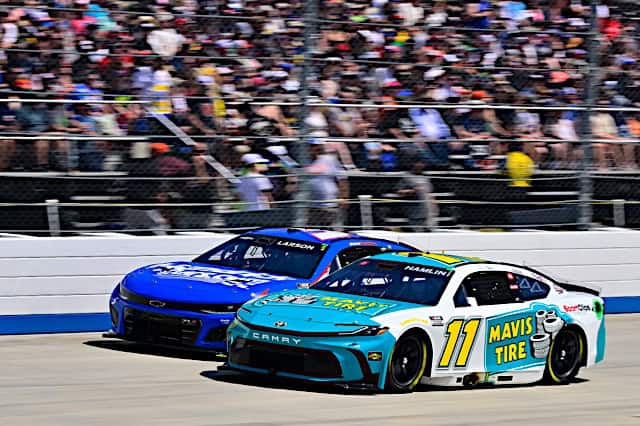What Happened?
Denny Hamlin dominated the final stage at Dover Motor Speedway and held off a late charge from Kyle Larson to take his third win of the season. Hamlin’s teammate Martin Truex Jr. finished third despite punching a hole in the nose of his car on a restart.
Hamlin had the edge on restarts late in the race, opening up a gap on his competitors. As the runs went on, however, Larson would close. This proved especially true on the drive to the finish. While Larson got within a few car lengths, he ultimately could not pull alongside Hamlin, who matches William Byron for most wins in the series this year.
What Really Happened?
The action at Dover — from the green flag to the final battle — was the latest installment in an escalating brawl between two titanic teams. While Joe Gibbs Racing and Hendrick Motorsports dominate the headlines, the recent era of equality between the underdogs and the favorites is coming to an end.
After three seasons, it finally appears the Next Gen car might be beginning to lose its element of unpredictability. The widely praised parity of small teams competing for wins against big teams no longer exists.
The last two seasons produced 25 different winners from 12 different organizations. Many of these wins were more than just lucky superspeedway victories and involved the eventual winner running up front while leading a large number of laps.
This parity from the past has quickly evaporated to start the 2024 season. Through the first 11 races, only two teams have dominated everywhere except the superspeedways. Dover proved yet another example Sunday afternoon.
Don’t take this the wrong way, the race still looked good on paper. A number of drivers held the lead for periods of time, and nobody really ran away with the race. Even at the end, most people had a feeling Larson would make a run at Hamlin.
This common theme appears almost weekly. A group of drivers take turns leading chunks of laps, helping the races feel a little more competitive. When you look at the pylon (or video board, depending on the track nowadays), the front of the grid normally has about eight common denominators.
No matter the track, no matter the discipline and no…
Click Here to Read the Full Original Article at …

